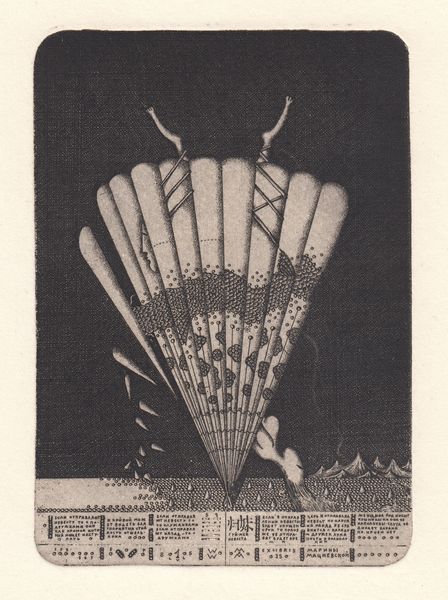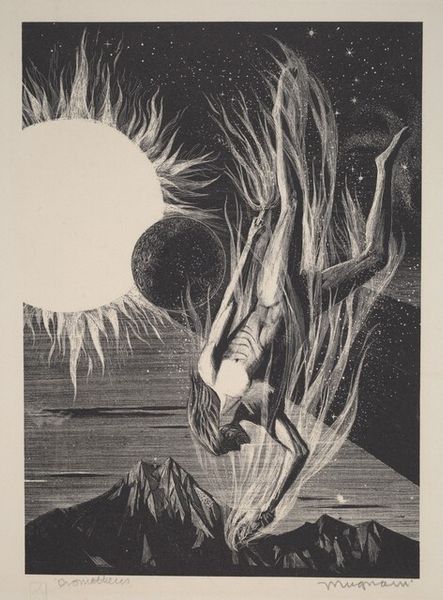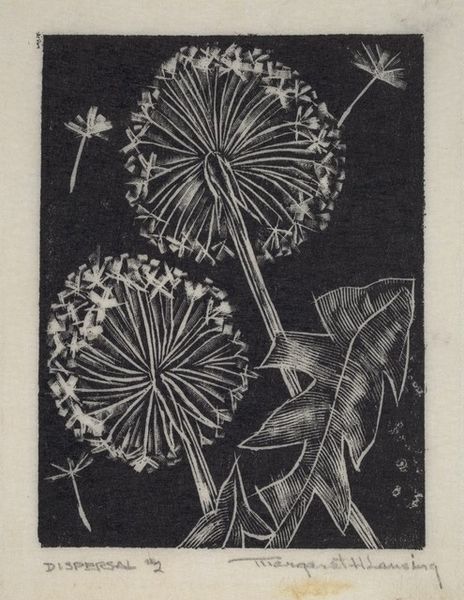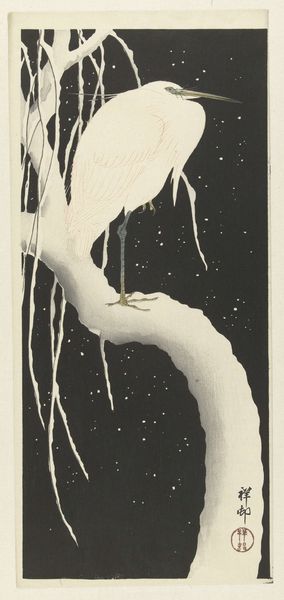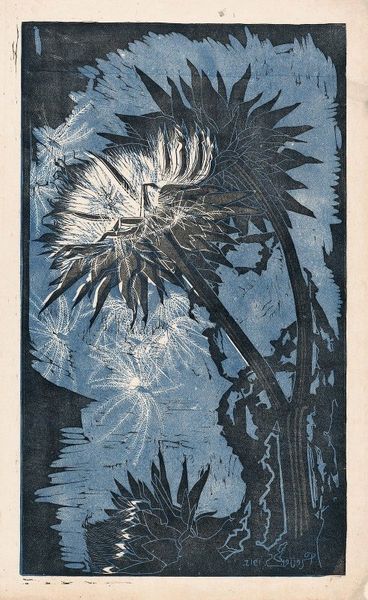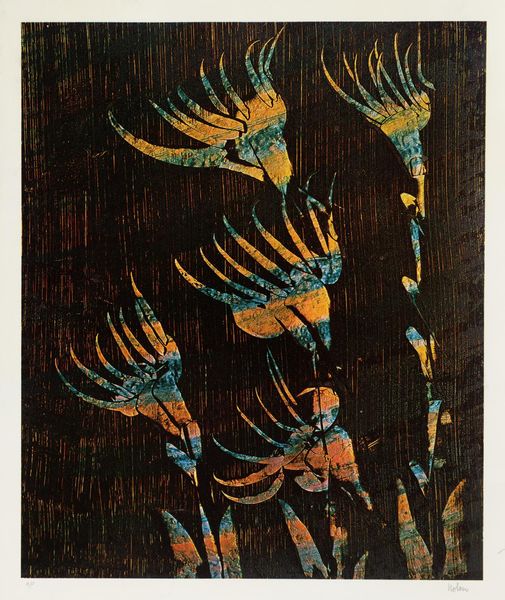
Copyright: National Gallery of Art: CC0 1.0
Mario Avati created "Les Papillons de Nagasaki" using etching techniques in the twentieth century. The artwork features a striking monochromatic palette, dominated by stark contrasts between light and shadow, immediately evoking a sense of solemnity and reflection. The composition is structured around vertical bamboo-like shoots, interspersed with delicate, luminous butterflies and ethereal foliage. Avati uses light to define form, yet the absence of colour creates a flattening effect, emphasizing the print's surface and the intricate textures achieved through etching. This interplay of light and texture transforms the butterflies, traditionally symbols of metamorphosis and hope, into ghostly apparitions, hinting at themes of fragility and transience. The semiotic weight of butterflies takes on new meaning in the context of Nagasaki, resonating with themes of devastation and resilience. It challenges us to consider how form and technique intersect with cultural memory, inviting ongoing interpretations.
Comments
No comments
Be the first to comment and join the conversation on the ultimate creative platform.


